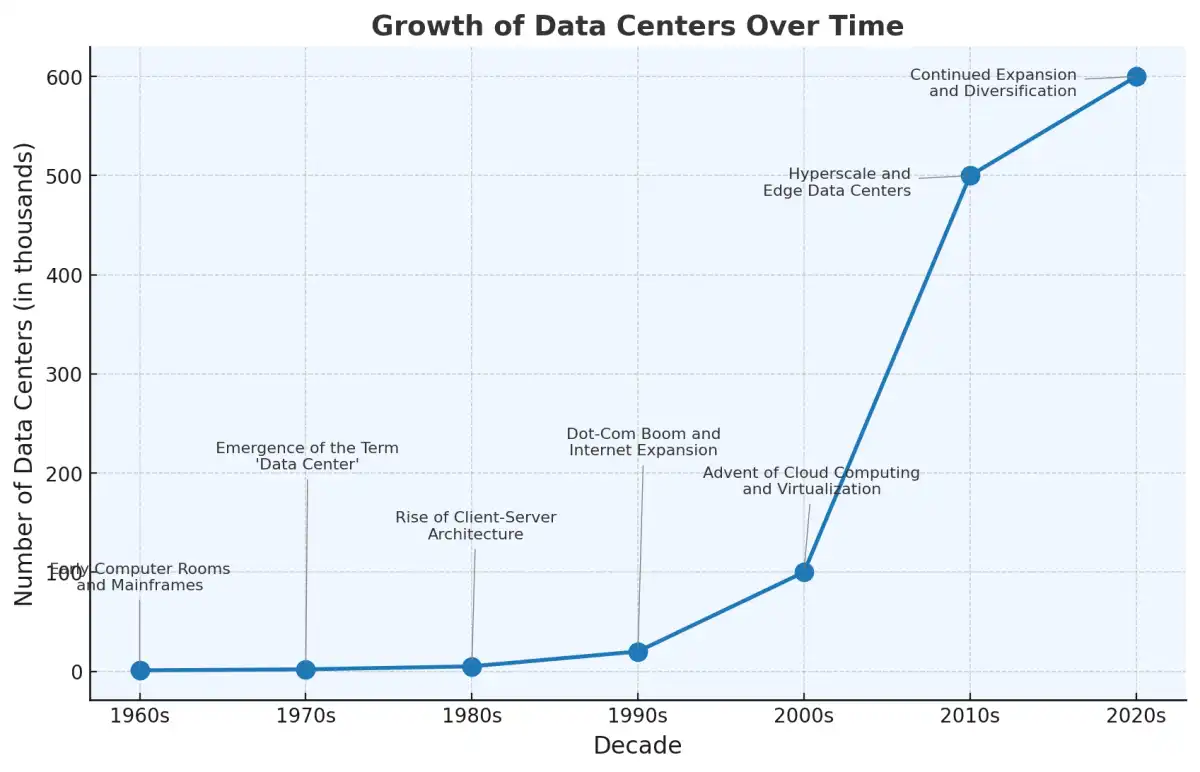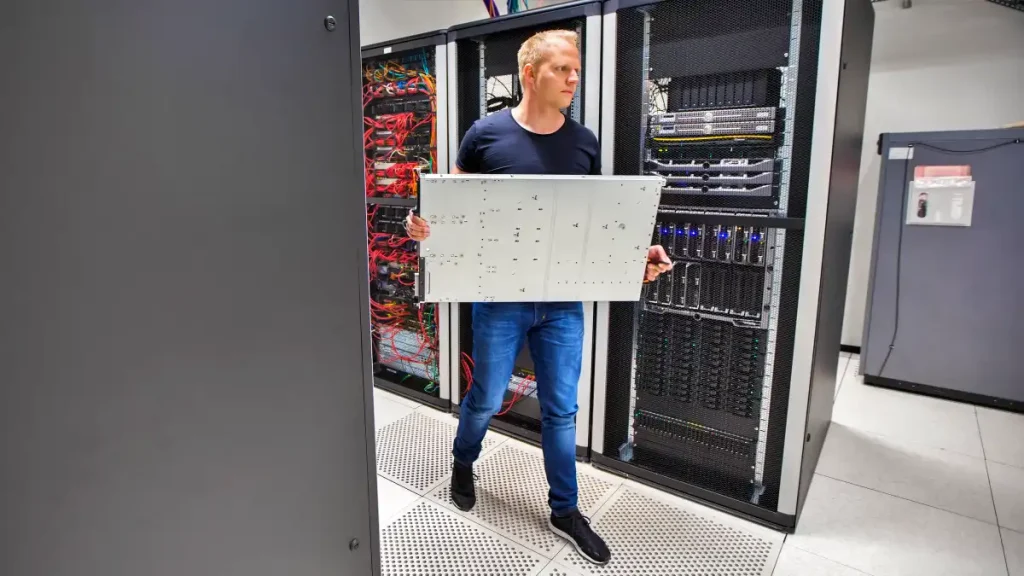
- 1960s: Early Computer Rooms and Mainframes
- Size: Small, room-sized facilities.
- Number: Limited to large corporations, universities, and government agencies.
- Description: The concept of the data center begins with mainframe computers housed in dedicated rooms. These early “data centers” were highly controlled environments needed for the massive, room-filling computers of the time.
- 1970s: Emergence of the Term ‘Data Center’
- Size: Still small, focused on individual rooms or floors.
- Number: Hundreds globally, mainly in the US and Europe.
- Description: As computing power grows and becomes central to business operations, the term “data center” starts to gain use. More organizations, especially financial institutions and governments, begin to build specialized rooms for their computer equipment.
- 1980s: Rise of Client-Server Architecture
- Size: Expanding to entire floors or small buildings.
- Number: Thousands worldwide.
- Description: The transition from mainframes to client-server architecture increases the need for multiple servers and storage devices, leading to more expansive data centers. Growth in telecommunications also contributes to an increase in the number of data centers.
- 1990s: Dot-Com Boom and Internet Expansion
- Size: Growing from small buildings to larger facilities.
- Number: Tens of thousands.
- Description: With the internet’s rapid growth and the dot-com boom, data centers proliferate. They expand in size and number to support web hosting, e-commerce, and the burgeoning needs of internet-based businesses. Colocation data centers also emerge, where multiple companies share space in a single facility.
- 2000s: Advent of Cloud Computing and Virtualization
- Size: Large facilities, often the size of warehouses.
- Number: Hundreds of thousands.
- Description: Cloud computing and virtualization technologies revolutionize the data center industry. Large-scale data centers are built to support the services provided by tech giants like Google, Amazon, and Microsoft. Facilities become more energy-efficient, and hyperscale data centers (over 5,000 servers) start to appear.
- 2010s: Hyperscale and Edge Data Centers
- Size: Massive, with some covering millions of square feet.
- Number: Over 500,000 worldwide, with significant growth in hyperscale data centers.
- Description: The rise of cloud services, big data, and the Internet of Things (IoT) drives demand for even larger data centers. Hyperscale data centers, which support large-scale operations and cloud providers, become the norm. Simultaneously, smaller edge data centers emerge to bring data closer to end-users, improving speed and reducing latency.
- 2020s: Continued Expansion and Diversification
- Size: Largest data centers exceed 1 million square feet.
- Number: Over 600,000 globally, with a steady increase in hyperscale facilities.
- Description: The growth continues with increasing demand for cloud services, AI, 5G, and edge computing. Data centers become more geographically distributed, with more investments in renewable energy sources and sustainable practices. There is a notable rise in modular data centers, which can be quickly deployed in various locations to meet specific demands.
Key Trends Over Time:
- 1960s-1980s: Small, centralized data centers in corporate and government settings.
- 1990s: Rapid growth with internet expansion; rise of colocation centers.
- 2000s: Emergence of cloud computing leads to large-scale data centers.
- 2010s-2020s: Growth of hyperscale and edge data centers; emphasis on sustainability and geographic diversity.







